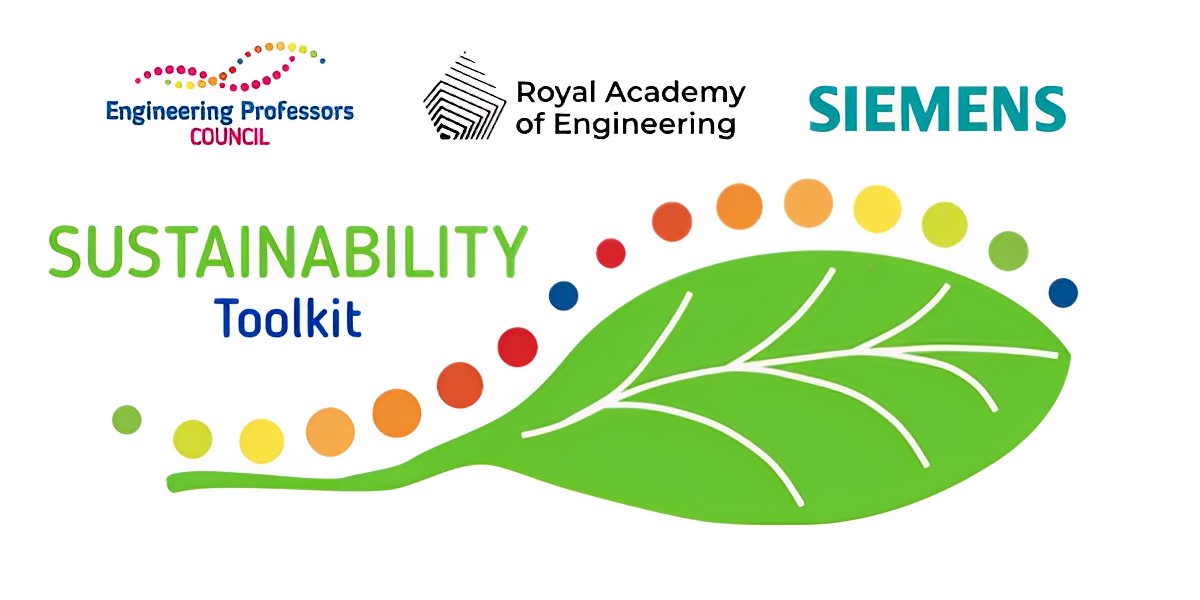Authors: Mr. Neil Rogers (Independent Scholar), Dr. Sarah Jayne Hitt Ph.D. SFHEA (NMITE, Edinburgh Napier University)
Topic: Designing a flood warning system to communicate risk.
Tool type: Teaching.
Engineering disciplines: Electronic; Energy; Mechanical.
Keywords: Climate change; Water and sanitation; Renewable energy; Battery Technologies; Recycling or recycled materials; AHEP; Sustainability; Student support; Local community; Environment; Future generations; Risk; Higher education; Assessment; Project brief.
AHEP mapping: This resource addresses two of the themes from the UK’s Accreditation of Higher Education Programmes fourth edition (AHEP4): The Engineer and Society (acknowledging that engineering activity can have a significant societal impact) and Engineering Practice (the practical application of engineering concepts, tools and professional skills). To map this resource to AHEP outcomes specific to a programme under these themes, access AHEP 4 here and navigate to pages 30-31 and 35-37. Potential alignments with AHEP criteria are shown below.
Related SDGs: SDG 7 (Affordable and Clean Energy); SDG 11 (Sustainable Cities and Communities).
Educational level: Intermediate / Advanced.
Learning and teaching notes:
This resource outlines a project brief that requires an engineer to assess the local area to understand the scale of flooding and the local context. This will highlight how climate change affects everyday life, how water usage is changing and happening on our doorstep.
The project also requires the engineer to be considerate of the needs of a local business and showcases how climate change affects the economy and individual lives, enabling some degree of empathy and compassion to this exercise.
Depending upon the level of the students and considering the needs of modules or learning outcomes, the project could follow either or both of the following pathways:
Pathway 1 – Introduction to Electronic Engineering (beginner/intermediate- Level 4)
- LO1: Describe the operation of electronic circuits and associated discrete components (AHEP4: SM1m).
- LO2: Compare the operation principles of a variety of electronic sensors and actuators and apply them to a given task (AHEP4: EA2m).
- LO3: Interpret how transistors and operational amplifiers function (AHEP4: EA4m).
- LO4: Know how amplifiers operate and assess their performance for a given application (AHEP4: EA1m; EA2m).
- LO5: Integrate the operation of an actuator, sensor, and power supply into a system for a given task (AHEP4: EA4m; EA6m).
In this pathway, the project deliverables could be in the form of a physical artefact, together with a technical specification.
Pathway 2 – Electromagnetics in Engineering (intermediate/advanced- Level 5)
- LO1: communicate the primary challenges inherent in wireless communication (AHEP4: SM1m
- LO2: devise solutions to a given design challenge (AHEP4: SM1m; SM3m)
In this pathway, the project deliverable could be in the form of a Technical Report.
This project allows teachers the option to stop at multiple points for questions and/or activities as desired.
Learners have the opportunity to:
- analyse local environmental factors that affect river water levels,
- appreciate local planning with respect to installing devices on or near a riverbank,
- consider how to communicate with a variety of stakeholders,
- undertake cost-benefit and value trade-off analysis in the context of using sustainable materials,
- undertake cost-benefit and value trade-off analysis in the context of using renewable energy,
- practise argument and reasoning related to sustainability dilemmas.
Teachers have the opportunity to:
- introduce concepts related to climate change in the local environment,
- introduce concepts related to environmental sensors,
- introduce concepts related to renewable energy sources,
- introduce concepts related to battery systems,
- introduce concepts related to local planning laws,
- informally evaluate students’ argument and reasoning skills,
- integrate technical content in the areas of electrical or mechanical engineering related to water level monitoring,
- authentically assess a team activity and individual work.
Learning and teaching resources:
- De Groot, J.I. and Steg, L. (2009) ‘Mean or green: Which values can promote stable Pro‐environmental behavior?’, Conservation Letters, 2(2), pp. 61–66.
- Goal 7 | Department of Economic and Social Affairs (no date) United Nations. (Accessed: 06 February 2024).
- Goal 13 | Department of Economic and Social Affairs (no date) United Nations. (Accessed: 06 February 2024).
- Guidance on sustainability, Engineering Council
- Lindsey, R. (2022) Climate change: Global sea level, NOAA Climate.gov. Reviewed by R. Lumpkin et al. (Accessed: 06 February 2024).
Overview:
A local business premises near to a river has been suffering from severe flooding over the last 10 years. The business owner seeks to install a warning system that can provide adequate notice of a possible flood situation.
Time frame & structure:
This project can be completed over 30 hours, either in a block covering 2-3 weeks (preferred) or 1 hour per week over the academic term. This project should be attempted in teams of 3-5 students. This would enable the group to develop a prototype, but the Specification (Pathway 1) and Technical Report (Pathway 2) could be individual submissions without collusion to enable individual assessment.
It is recommended that a genuine premises is found that has had the issues described above and a site visit could be made. This will not only give much needed context to the scenario but will also trigger emotional response and personal ownership to the problem.
To prepare for activities related to sustainability, teachers may want to read, or assign students to pre-read the following article:
‘Mean or Green: Which values can promote stable pro-environmental behaviour?’
Context and Stakeholders:
Flooding in the local town has become more prevalent over recent years, impacting homes and businesses. A local coffee shop priding itself on its ethical credentials is located adjacent to the river and is one of the businesses that has suffered from severe flooding over the last 10 years, causing thousands of pounds worth of spoilt stock and loss of revenue. The local council’s flood warning system is far from adequate to protect individuals on a site-by-site basis. So the shop is looking for an individual warning system, giving the manager and staff adequate notice of a possible flood situation. This will enable stock to be moved in good time to a safer drier location. The shop manager is very conscious of wanting to implement a sustainable design that uses sustainable materials and renewable energy, to promote the values of the shop. It is becoming clear that such a solution would also benefit other businesses that experience flooding and a wider solution should also be considered.
Pathway 1
This project requires assessment of the local area and ideally a visit to the retailer to understand their needs and consider options for water level monitoring. You are required to consider environmental and sustainable factors when presenting a solution.
After a visit to the premises:
- Discussion: What is your initial reaction to the effects of the flooding and does it surprise you? What might your initial reaction reveal to you about your own perspectives and values?
- Discussion: What is your initial reaction to the causes of the flooding and does it surprise you? What might your initial reaction reveal to you about your own perspectives and values?
- Discussion and activity: List the potential issues and risks to installing a device in or near to the river bank.
- Activity: Research water level monitoring. What are the main technical and logistical issues with this technology in this scenario?
- Activity: Both cost-benefit and sustainable trade-off analyses are valuable approaches to consider in this case. Determine the possible courses of action and undertake both types of analysis for each position by considering both short- and long-term consequences.
- Reflection: Obligations to future generations: Do we have a responsibility to provide a safe and healthy environment for humans that don’t yet exist, or for an ecosystem that will eventually change?
Design Process:
To satisfy the learning outcomes identified above the following activities are suggested.
Assessment activity 1 – Physical artefact:
Design, build and test a prototype flood warning device, monitoring various water levels and controlling an output or outputs in an alarm condition to meet the following as a minimum:
a) The device will require the use of an analogue sensor that will directly or indirectly output an electrical signal proportional to the water level.
b) It will integrate to appropriate Operational Amplifier circuitry.
c) The circuitry will control an output device or devices.
d) The power consumption of the complete circuit will be assessed to allow an appropriate renewable energy supply to be specified (but not necessarily be part of the build).
Assessment activity 2 – Technical specification:
The written specification and accompanying drawings shall enable a solution to be manufactured based on the study, evaluation and affirmation of the product requirements.
The evaluation of the product requirements and consequent component selection will reference the use of design tools and problem-solving techniques. In compiling the specification the component selection and integration will highlight the underlying engineering principles that have been followed. The specification shall be no more than 1000 words (plus illustrations and references).
Pathway 2
This project requires assessment of the local area and ideally a visit to the retailer to understand their needs and consider options for water level monitoring.
You are required to consider environmental and sustainable factors when presenting a solution.
After a visit to the premises:
- Discussion: What is your initial reaction to the effects of the flooding and does it surprise you? What might your initial reaction reveal to you about your own perspectives and values?
- Discussion: What is your initial reaction to the causes of the flooding and does it surprise you? What might your initial reaction reveal to you about your own perspectives and values?
- Discussion and activity: List the potential issues and risks to installing a device in or near to the river bank.
- Activity: Both cost-benefit and sustainable trade-off analyses are valuable approaches to consider in this case. Determine the possible courses of action and undertake both types of analysis for each position by considering both short- and long-term consequences.
Wireless communication of information electronically is now commonplace. It’s important for the learners to understand the differences between the various types both technically and commercially to enable the most appropriate form of communication to be chosen.
Pathway 1 above explains the need for a flood warning device to monitor water levels of a river. In Pathway 2, this part of the challenge (which could be achieved in isolation) is to communicate this information from the river to an office location within the town.
Design Process:
Design a communications system that will transmit data, equivalent to the height of the river in metres. The maximum frequency and distance over which the data can be transmitted should be explored and defined, but as a minimum this data should be sent every 20 seconds over a distance of 500m.
Assessment activity – Technical report:
A set of user requirements and two possible technical solutions shall be presented in the form of a Technical Report:
- Highlighting the benefits and drawbacks of each.
- Explaining the inherent challenges in wireless communication that defined your selections
- Design tools and problem-solving techniques should be used to define the product requirements and consequent component selection
The report shall be no more than 3000 words (plus illustrations and references)
This work is licensed under a Creative Commons Attribution-ShareAlike 4.0 International License.
Any views, thoughts, and opinions expressed herein are solely that of the author(s) and do not necessarily reflect the views, opinions, policies, or position of the Engineering Professors’ Council or the Toolkit sponsors and supporters.
To view a plain text version of this resource, click here to download the PDF.





